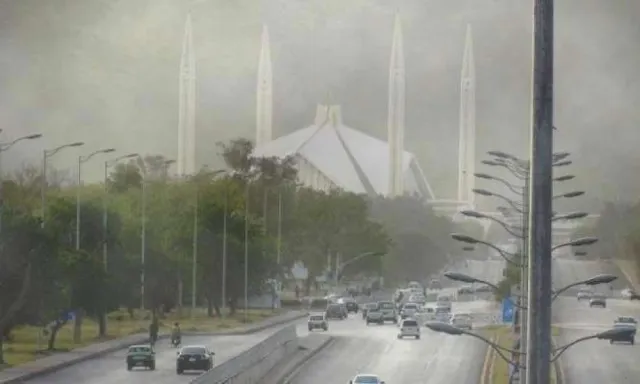The Pakistan Environmental Protection Agency (Pak EPA) has issued a stark warning regarding the rising risk of smog in Islamabad and its surrounding areas, urging local authorities to impose Section 144 for the next four months. This proposed measure aims to combat air pollution by prohibiting smoke emissions from kilns, the burning of solid waste, and agricultural residue. The agency emphasized the need for strict enforcement under the EPA Act, cautioning that violations could lead to severe penalties.
The letter from Pak EPA highlighted that the threat of smog increases significantly during cold, dry weather, particularly affecting regions in eastern and central Punjab. As air quality is expected to decline, cities including Islamabad, Rawalpindi, Gujranwala, Sargodha, and Lahore are at risk. The smog season, typically spanning from November to February, poses serious threats to public health, the environment, and the economy.
 |
| Lahore |
To manage pollution levels, the Pak EPA is taking proactive steps, including monitoring vehicle emissions, curbing solid waste burning, and managing agricultural waste disposal. Local authorities have been called upon to support these efforts effectively. Amidst these rising concerns, Romina Khurshid Alam, the Prime Minister’s Assistant on Climate Change, has called for immediate action to protect air quality. She urged residents of Islamabad to refrain from burning waste, which exacerbates pollution and can lead to serious health issues.
In Lahore, the situation is dire. The city has consistently topped global pollution rankings, recording an alarming air quality index (AQI) of 581 on a recent Sunday morning. Specific areas, such as Defense Housing Authority (DHA) Phase 8, peaked at a staggering AQI of 1,754, while Gulberg and Askari 10 recorded AQIs of 1,258 and 1,404, respectively. These levels indicate extremely hazardous air quality, with readings above 300 classified as severe health risks.
Persistent smog has severely impacted residents’ health, leading to symptoms such as breathing difficulties, coughing, and eye irritation. Health experts are advising the public to wear masks and protective eyewear to minimize exposure to the toxic air. Notably, on Saturday, Lahore's air quality reached a shocking 1,067 AQI, far exceeding WHO safety standards by over 80 times.
Senior environmental official Jahangir Anwar expressed grave concern over these unprecedented pollution levels, attributing the worsening smog to a combination of low-grade diesel emissions, smoke from crop burning, and the trapping of pollutants by cooler winter air. This hazardous mix has created a thick haze that officials predict will linger for several days.
In response, local authorities in Lahore have introduced targeted restrictions in high-pollution areas, including a ban on tuk-tuks with two-stroke engines and suspending operations at restaurants using open-flame barbecues. A work-from-home policy has been implemented for half of the staff at government and private offices starting Monday, while construction activities have been paused, and street food vendors using open flames must close by 8 p.m.
As winter conditions exacerbate the pollution crisis, both Islamabad and Lahore are in urgent need of effective measures to improve air quality. With the implementation of emergency protocols and ongoing monitoring, officials and residents alike hope to see positive changes in the coming days.




















